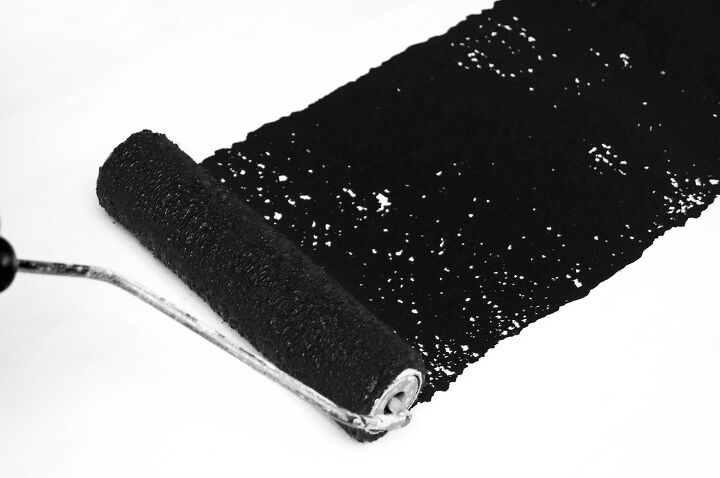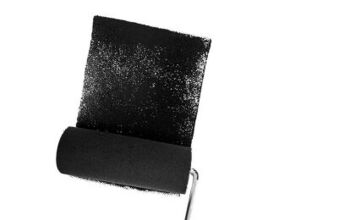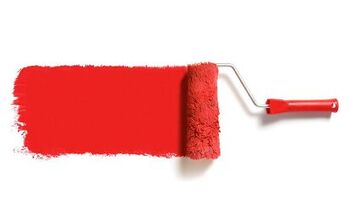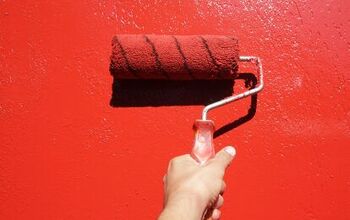What Is The Best Color Primer To Use For Black Paint? (Find Out Now!)

There’s no denying that a fresh coat of paint can give your walls an instant facelift. But it only improves if you do it right, which means taking the time to do the prep. In most cases, the prep work for your paint job will include priming, especially if you’re painting over a dark color like black.
When priming over black paint, it’s essential to use two coats to ensure the black doesn’t bleed through. If you’re painting a white or light color over black paint, use a white primer like KILZ Restoration Interior. However, if you’re painting a dark color over black paint, opt for a gray primer like Zinsser Bullseye 1-2-3.
You might think black is the toughest color to paint over, but painting over red paint actually gets the prize. Red tends to pierce through new layers of paint more so than other dark colors, including black. So, if you’re about to paint a black wall, don’t fret; it might not be as challenging as you suspect.
Do You Need to Hire a Paint Contractor?
Get free, zero-commitment quotes from pro contractors near you.

What Primer Is Best for Painting Over Black Paint?
When painting your wall, the last thing you want is the wrong color to end up on your wall. But, if you don’t choose the right primer, you could end up with a color that’s not true to itself. In the case of black paint, your new color could end up coming across as darker than you intended.
The primer you end up choosing will depend heavily on what your new color will be. However, no matter what primer you choose, prepare to paint at least two coats over your black wall. Also, ensure you let each coat dry thoroughly before painting the next coat.
It’s also advised not to just grab the cheapest primer you can find. Higher-quality primers tend to contain more pigments and binders, which help hide the black paint.
Painting Light Colors Over Black Paint
A great option for painting over dark colors with a light color or white is KILZ Restoration Interior Primer. It’s water-based but has properties that make it perform similar to oil and shellac primers. It also provides incredible sealing and stain-blocking, which is another good quality for covering dark colors.
Do you plan to do any exterior painting as well or painting in high-humidity areas like the kitchen or bathroom? If so, opt for KILZ-3 Premium High-Hide Stainblocker, an interior/exterior water-based primer.
If only working on interior projects, opt for KILZ Kitchen & Bath Interior Primer, which provides excellent coverage. Regardless of the primer, using a white primer over black paint is best if painting white or a light color. If using a light color, you can add some of your color to the first coat of your white primer.
Painting Dark Colors Over Black Paint
When painting over black with a dark color, a gray primer is an ideal choice to help with coverage and color consistency. Zinsser Bullseye 1-2-3 Gray Primer is a budget-friendly, excellent option, possessing fantastic stain blocking, and works with multiple surfaces.
A gray primer is a great choice when you’re painting dark or vibrant colors. It helps your new color stay more accurate in fewer coats.
Another good gray primer is KILZ 2 Gray Interior/Exterior Primer. You could also opt for a tintable primer and tint it with some of your new color.
Can Paint/Primer Combos Work Over Black Paint?
Paint-and-primer combos offer excellent adhesion and coverage and can definitely save you time. However, they are typically costlier than standard primers, so you want only to use them when you need limited coats.
For example, if painting over a light color, two coats of paint-and-primer in one is likely enough. Then, in just two coats, you can finish your whole paint project.
However, you probably need three to four coats to get to the most accurate color possible when painting over black.
What Primer Is Best Underneath Black Paint?
If you plan to paint a wall black, it’s best to use a gray primer regardless of the current wall color. The gray will help provide a solid basecoat for your new black paint. You can also use a tintable primer.
The Benefits of Priming Before Painting
Yes, priming before you paint adds an extra step to your work process, but ultimately, it saves you time. This is because neglecting to prime can lead to a host of issues down the road that make you do the job again.
So, it’s best to plan to apply one or two coats of primer before you start to paint your walls. Here are some of the main benefits of priming before you paint:
- Applying primer increases the lifespan of your paint job and adds durability.
- Using a primer means fewer coats of paint, which means spending less money.
- Also, primer typically dries faster than paint, so you won’t have to wait as long in between coats. So, overall, you can complete your entire paint job faster.
- The right primer will hide the former paint color more than paint will.
- Primer helps prevent fading, cracking, peeling, and other unsightly issues.
- Applying primer keeps your new paint looking fresher longer, sealing the surface and blocking stains.
- Priming also provides a more even surface for your paint as well as increases adhesion. This is because primers typically have more resins than paint.
Always Prep Before You Prime
No matter what primer you end up using, it’s always best to prep before you prime. Especially if the surface you’re painting has chipping or peeling paint or is unfinished.
Even if the primer claims that you don’t need to do any prep work, still use common sense. In many cases, a no-prep primer could work without prep for painted walls in good condition. It’s also a good option for certain furniture items and similar things.
However, even a no-prep primer won’t yield a good result if you leave a surface untouched with peeling paint. Also, some prep can lead to a longer-lasting paint job if you’re priming over overly smooth surfaces, like certain plastics. Sometimes it helps to rough the surface up a bit with some light sanding.
Do You Need to Hire a Paint Contractor?
Get free, zero-commitment quotes from pro contractors near you.

Related Questions
How much does primer cost?
Depending on what size paint can you get and the type of primer, your cost for primer will vary. A decent-quality, white primer will cost about $15 for a gallon. Primers with more features, like mold resistance and higher quality, can cost closer to $25 to $40 per gallon. For example, KILZ Restoration costs about $40 for one gallon and $182 for a five-gallon bucket.On average, it’s more cost-effective to get primer (and paint) in larger sizes if you know you’ll need it. For example, a quart of KILZ-2 All-Purpose, Interior/Exterior Primer with sealing and stain-blocking costs about $10 for a quart. However, a gallon (or 4 quarts) of the same paint costs about $19. If you have a big painting project ahead of you, for example, painting your whole house, consider larger buckets. For example, the KILZ-2 mentioned above costs about $86 for a 5-gallon bucket or roughly $46 for 3.5 gallons.KILZ-3 Premium High-Hide costs about $27 for one gallon and up to $127 for a five-gallon bucket. Zinsser Bullseye 1-2-3 costs roughly $23 for one gallon and about $105 for five gallons.
How much does a professional painting service cost?
If you’d rather not roll up your sleeves and do the work, you can hire professional painters. However, the price you pay varies based on the room size, colors, and necessary coats. Also, the required prep work factors into the bottom line.For example, if your walls are in poor shape, stained, damaged, etc., they will require more prep work. If you’re applying lighter colors over dark, hard-to-cover shades, like red, the job will require more coats. However, in a nutshell, for a standard-sized room, about 10 x 12, you can expect to pay between $300 and $800. Larger rooms can cost around $1,200 to $1,500, while smaller rooms might be $200 to $500.Keep in mind; it’s not necessarily the room size but the surface area that the painters need to paint. So, you might have a large kitchen, but most walls are a backsplash or taken up with cabinets. Find a few painters based on recommendations and reviews and have them give you estimates. Go for at least three before you make your final decision.

Stacy Randall is a wife, mother, and freelance writer from NOLA that has always had a love for DIY projects, home organization, and making spaces beautiful. Together with her husband, she has been spending the last several years lovingly renovating her grandparent's former home, making it their own and learning a lot about life along the way.
More by Stacy Randall



























